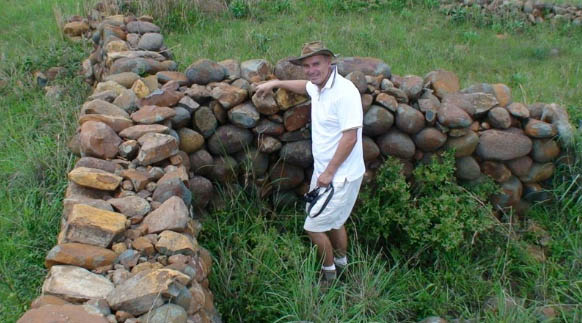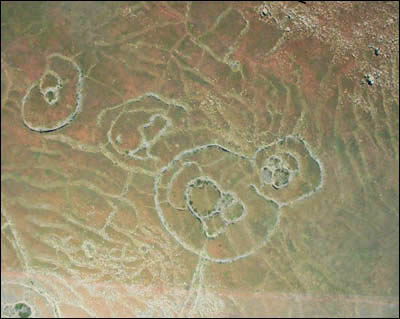Post by brillbilly on Oct 26, 2009 12:21:30 GMT 10
i dont know about the true date of the site and i dont think its 75,000 years old but its old...It could be the Oldest Man-made Structures on Earth to date
Older than the Giza pyramids ?
Older than Stonehenge?
A 75,000 year-old stone calendar - In the cradle of humankind
A new discovery of an ancient circular monolithic stone calendar site in Mpumalanga has proven to be at least 75,000 years old, pre-dating any other structure found to date. Southern Africa holds some of the deepest mysteries in all of human history. What we are told is that at around 60,000 years ago the early humans migrated from Africa and populated the rest of the world.
Who were these first humans? What did they do? And where did they disappear to?
It estimated that there are over 100 000 ancient stone ruins scattered throughout the mountains of southern Africa. Artefacts that have been recovered from these ruins show a long and extended period of settlement that spans to over 200,000 years. The most spectacular examples of these ancient ruins are RIGHT HERE within walking distance. Modern historians have been speculating about the origins of these ruins, often calling them ‘cattle kraal of little historic importance’. The truth of the matter is that closer scientific inspection shows that we actually know very little about these spectacular ancient ruins. It is a great tragedy that thousands have already been destroyed through sheer ignorance but forestry and farmers have now started to protect these ruin. Adam’s Calendar is the flagship among these ruins because we can date this monolithic calendar with relative certainty to at least 75,000 years of age based on a number of scientific evaluations. Adam’s Calendar also presents the first tangible evidence of consciousness among the earliest humans in the ‘Cradle of humankind’. The site is built along the same longitudinal line as Great Zimbabwe and the Great Pyramid. It is also aligned with the rise of Orion’s belt some 75,000 years ago.
Adam’s Calendar
This is possibly the only example of a functional, mostly in-tact monolithic stone calendar in the world.
Older than the Giza pyramids ?
Older than Stonehenge?
A 75,000 year-old stone calendar - In the cradle of humankind
A new discovery of an ancient circular monolithic stone calendar site in Mpumalanga has proven to be at least 75,000 years old, pre-dating any other structure found to date. Southern Africa holds some of the deepest mysteries in all of human history. What we are told is that at around 60,000 years ago the early humans migrated from Africa and populated the rest of the world.
Who were these first humans? What did they do? And where did they disappear to?
It estimated that there are over 100 000 ancient stone ruins scattered throughout the mountains of southern Africa. Artefacts that have been recovered from these ruins show a long and extended period of settlement that spans to over 200,000 years. The most spectacular examples of these ancient ruins are RIGHT HERE within walking distance. Modern historians have been speculating about the origins of these ruins, often calling them ‘cattle kraal of little historic importance’. The truth of the matter is that closer scientific inspection shows that we actually know very little about these spectacular ancient ruins. It is a great tragedy that thousands have already been destroyed through sheer ignorance but forestry and farmers have now started to protect these ruin. Adam’s Calendar is the flagship among these ruins because we can date this monolithic calendar with relative certainty to at least 75,000 years of age based on a number of scientific evaluations. Adam’s Calendar also presents the first tangible evidence of consciousness among the earliest humans in the ‘Cradle of humankind’. The site is built along the same longitudinal line as Great Zimbabwe and the Great Pyramid. It is also aligned with the rise of Orion’s belt some 75,000 years ago.
Adam’s Calendar
This is possibly the only example of a functional, mostly in-tact monolithic stone calendar in the world.











 Happy New Years Everybody!!!
Happy New Years Everybody!!!
